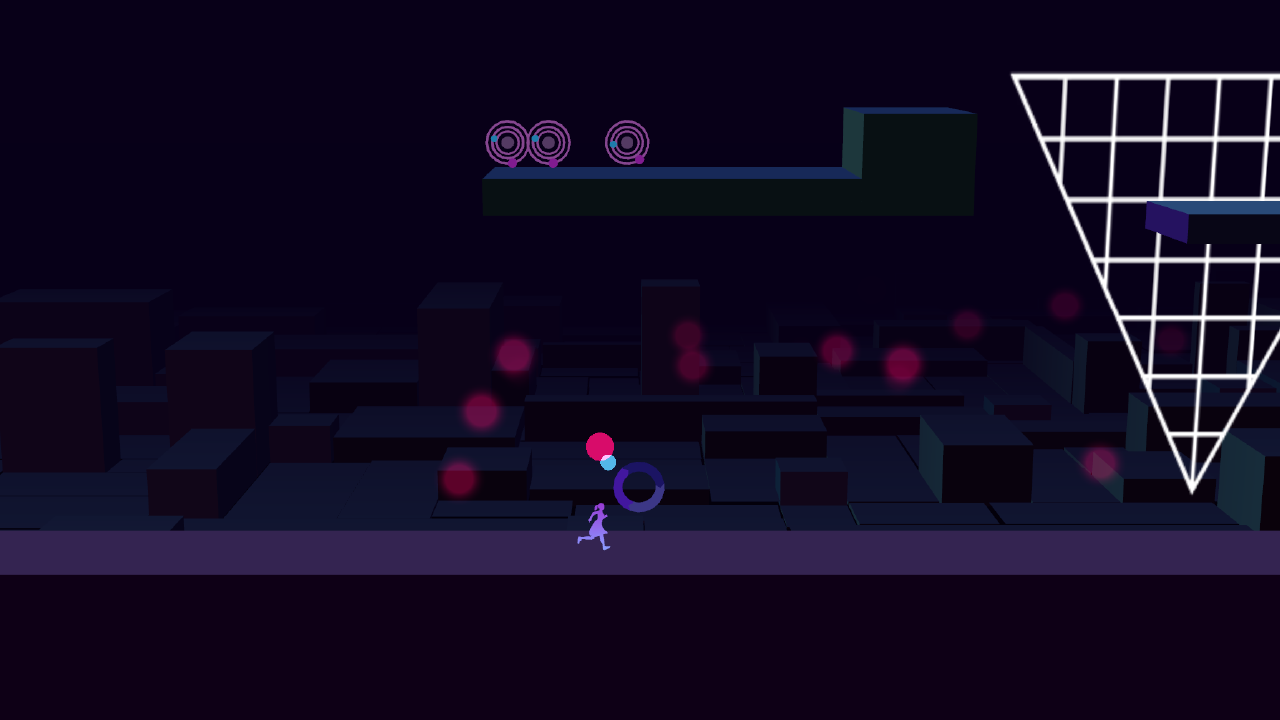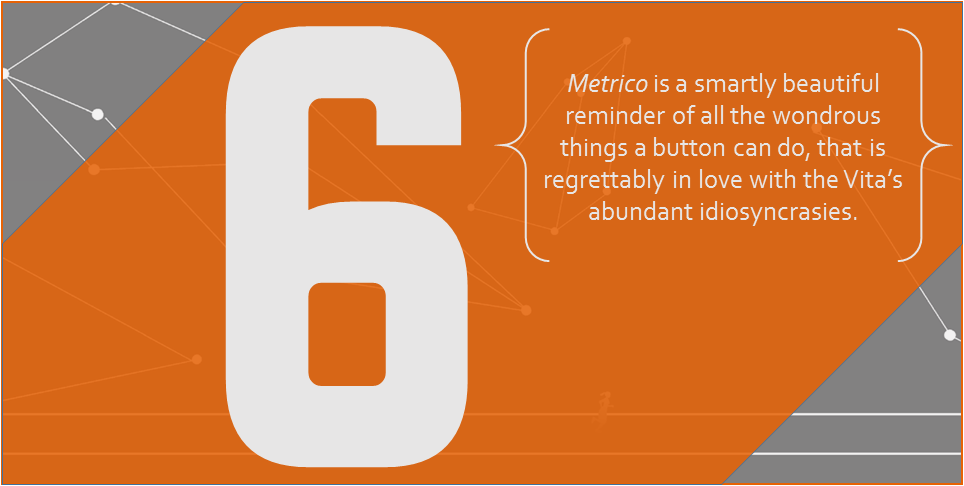Metrico Finds Beauty In Bar Charts
As an idea, Metrico is antithetical to much of what has been accepted as conventional game design wisdom. With most games doing everything they can to minimize how conscious you are of the controller sitting in your hand, the deliberateness with which Metrico calls attention to every input performed by the player is both unorthodox and risky. In subordinating the significance of an input’s outcome to focus entirely on the input itself, developer Digital Dreams have created something that is refreshing in its lack of pretensions and ancillary diversions, but ultimately overburdened by the Vita's plethora of extraneous features. Metrico is clean like few games would dare see themselves released as, sporting a utilitarian, low-poly aesthetic that calls to mind Android wallpapers and pre-texture 3D models. It’s a look that is intentionally low key, but also unexpectedly distinctive. Metrico may be primarily concerned with bar graphs and math diagrams, but it expresses itself in subtle ways that help shed the outer office program trappings for a more organic and responsive presentation. Little background modulations and pulses synch with the soundtrack to form an audiovisual dance second only to the more inherently musical Sound Shapes. Metrico might not share in that game’s charm, but its sharp lines and pastel colors are intriguing in their own way, seeming born out of love for how 80’s science fiction imagined the inside of a computer might look, could we step inside.

In practical terms, Metrico is a repeated exercise in demonstrating cause and effect, or perhaps more accurately, input and output. Depending on the circumstance, running right may cause a platform to lower, jumping could spawn enemies, and tilting the Vita sideways might extend a path. The challenge is rarely in executing the right moves, but in discovering which inputs affect which portions of the environment. It’s a compelling twist on traditional puzzle design and often works well to demonstrate the tiredness of so many genre conventions.
Because each puzzle effectively resets your knowledge of how Metrico works, it is able to get away with being far less involving than it may initially seem, by virtue of removing your ability to compile information. There are constants in Metrico – the controls will never change, and your methods of input are always clearly explained – but its puzzle designs rely significantly less on your knowledge of previous ones than most puzzle games. It is hard to imagine this approach working for an extended period of time without growing bothersome, but being only 3-5 hours long Metrico has little space to exhaust itself in before concluding.
Due to how heavily Metrico relies on calling attention to its controls, however, it is impossible to ignore the piece of plastic you are holding in your hands, and in ways that eventually become difficult to look beyond, Metrico serves as a damning reminder of one of the Vita’s biggest issues: peripheral bloat. Buttons and analogue sticks are passé; touchscreens are ubiquitous. But what about all those other bits and bobs that you more likely than not forgot existed? There was perhaps a time and a place where back touchpads and gyroscopes sounded cool, and the idea of a built-in camera was as compelling as bundled internet service. But like cable and the landline reserved for telemarketers, actually using most of the Vita’s quirkier features routinely serves as a reminder that you don’t really need them.

In some ways, it’s commendable that Digital Dreams seem to have heavily considered the Vita during development, but despite their attempts at building a game that takes advantage of everything Sony put inside the system, Metrico more often feels like a far worse game for it. Each world in Metrico introduces a new collection of inputs for you to fool around with, ranging from using the front and back touchscreens to aim projectiles, to gauging how much light is being exposed to the camera. The more obscure the inputs become, the more cumbersome Metrico is to play. It is difficult to say which among bad input methods is the worst offender, as each presents their own frustrations which range from physically uncomfortable to borderline broken. Metrico’s platforming isn’t tremendous to begin with, but it becomes exceedingly more obnoxious when you must contort the Vita at various angles, or wrestle with the camera’s inability to consistently register blue.
Final Word
It remains to be seen if the multiplatform re-release, Metrico+, will fix the issues inherent with the original’s marriage to Sony’s handheld, but as it stands Metrico succeeds at being both one of the Vita’s most intriguing titles, and a damning reminder of many of the system’s worst elements. In that way, Metrico has found a suitable partner in the Vita, both unique, curious experiments bloated beyond compare.


